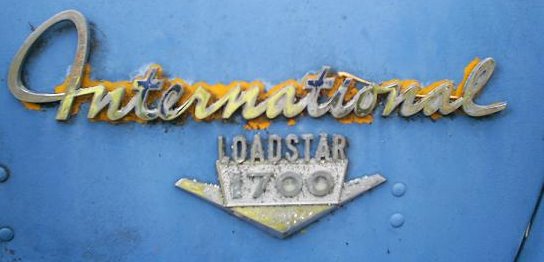Got my lab results back. Mixed news- I'm going to be okay, but my soil is acidic. Ha! You thought I was going to get a little too personal, didn't you? I can't imagine what could be more revealing about a garden than to see the results of a soil test, so brace yourself, I am about to go all nerdy about my dirt.
The best news from the results of the
soil samples that I took around the farm, is that the location of the yet-to-exist garden, has a perfectly neutral pH. Good to know. This confirms my theory that this was a garden location in the past. Also good know is that the soil there ranks very high for phosphorus and potassium, and high for magnesium in the "level of adequacy" scale. It also has plenty of calcium and zinc. Because the pH of the soil isn't acid, these nutrients will be readily available to plants and I shouldn't suffer from nutrient deficiencies with crops grown in this soil. The only recommendations were to add nitrogen, which I will by adding organic matter.

The other four samples, while still showing high levels of adequacy for most of the nutrients, also show that the soil pH ranged from 5.0 to 5.6, which puts my dirt firmly on the acid side. So, despite having medium to very high levels of adequacy for the measured nutrients, it will be hard for some plants, like common crops, fruit trees, garden plants, and good pasture grasses, to get their hands (roots?) on enough of them to be peak performers. A pH of 6.3 is the lowest recommended for optimal yields. Do I need optimal yields?

This little schematic of the farm shows the general locations of the soils I sampled, and their measured pH. The
pear and apple trees I planted early last spring were in the 5.6 pH in the upper left corner. If you remember, only the pears survived. I recently ordered more fruit trees to plant this spring, and when I looked up the preferred pH of different fruits, it shouldn't have been surprising to me that pears are one of the most tolerant of acid soils. Hmm, maybe I should just grow pears and other acid loving fruits, like blueberries and blackberries? Good idea, but I already ordered and paid for more apples, plums, cherries, and even some peach trees, so now I've got to decide if I can amend the soil enough to plant them where I envisioned, or if I should give up some of the neutral garden real estate for fruit trees.
Increasing the pH of the soil is something that farmers do all of the time. The solution they use is to add lime. I knew this, but what I didn't know is how does a person add lime to an entire farm? Even a small wanna be farm, like our ten acres. And is it an environmentally sound practice? I haven't figured out what the downside is yet, but I did figure out that if I want to know how much lime I need to use, I use the reported pH and the reported "buffer pH" (I gave up trying to understand what exactly the buffer pH is) and compare them to a table. This magic table tells me that I need to add two tons of 100 percent effective lime per acre. But, since most lime available is not 100 percent effective, I have to factor in the RNV value (what ever that means) of the lime. The quarry nearest the farm has lime with a RNV value of 63. So, after some math, I find I need to add three tons per acre. Three tons on each acre! For nine acres, that's only more than sixty thousand pounds, which would be more than twelve hundred fifty-pound bags, just for some perspective on how much lime this would be.
Of course, real farmers don't buy it by the bag, they pull a lime spreader behind their tractor. And if they really want their lime to be effective, they till it in. Well, we aren't equipped to till up the entire farm, but we could hire the lime spreader from the quarry and have them spread up to two tons per acre on the surface. This isn't as effective, and would probably require years of application before the soil was up to the recommended pH, but it might be worthwhile if we want to try growing some grains or grazing more animals. At least in the fields with the lowest pH. From what I've read, it seems the end of the growing season is the best time to spread the lime, so maybe next fall I will revisit this post and remind myself that I should hire a lime delivery.
One lingering question I have is about the toxicity of the lime to insects. While I was reading about lime I saw several references to people using lime to combat fleas and roaches, and when I watched a video of lime being spread on a field there was a giant dust cloud over the spreader, so I'm sure the lime gets on all the vegetation in the area. If lime kills fleas, wouldn't it kill all the other bugs, like honey bees, in the field?
All this investigation into soil pH prompted me to pull out the soil survey book for our county. I highlighted the boundaries of our place with yellow. Our soils are classified as Lowell silt loam, Faywood silt loam, and Eden silty clay loam. These are all soils described as "fine, mixed, mesic, Typic Hapludalfs." How's that for dirty talk!

If you've never spent time looking in a county soil survey book, then you are really missing out on some great nerdy stuff. I made myself a table with each of my soil types, and took some notes about how each soil performs for different uses. If I wanted to grow an oak and pine forest, I have the perfect soil. My soil has moderate limitations for ponds due to the bedrock that can be found twenty to forty inches down. There's a clay layer above that. Water perches near the surface because of this. All the soils are ranked fair or good for wildlife food crops, and with a high level of management (probably lots of lime!) the best soils could produce one hundred and ten bushels of corn per acre, forty bushels of wheat, four tons of hay, or up to eight animal unit months per acre. An animal unit month is equal to one cow, one horse, one mule, five goats, or five sheep for thirty days. If an acre could do that with a "high level of management" then maybe I could have a pancake crop, a flock of chickens and a few four legged fuzzies roaming the fields with my lazy level of management?





































